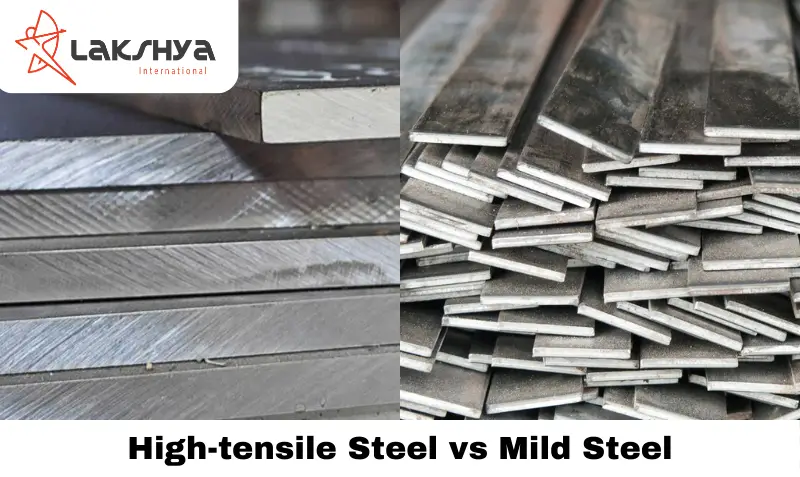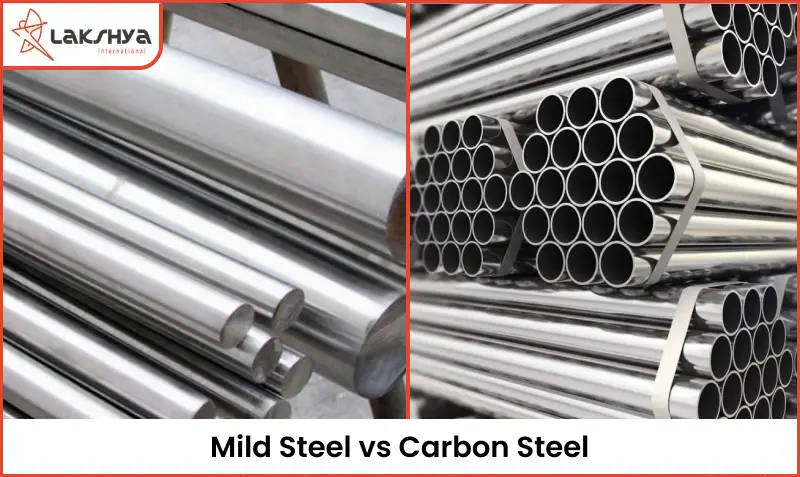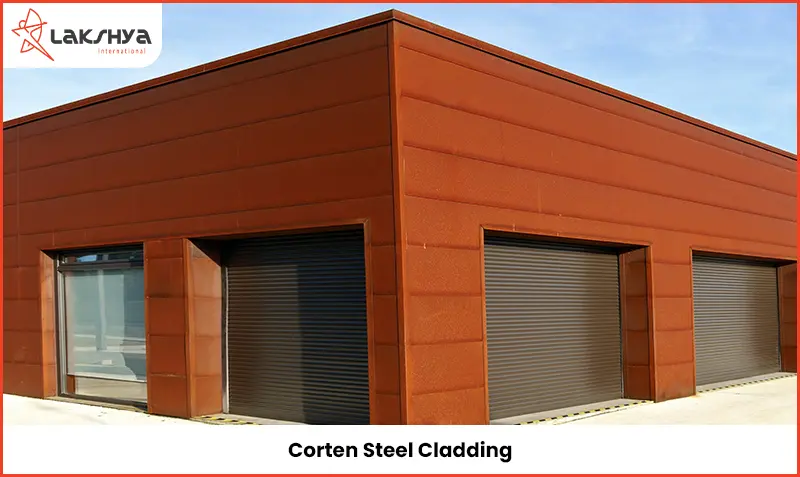Mild steel and high tensile steel are two types of carbon steels. Carbon steel has up to 0.90% carbon. Mild steel has a low amount of carbon, and high tensile steel has a bit more carbon along with special strong ingredients. Steeloncall will now explain where we use mild steel and high tensile steel in construction.
What is high-tensile steel?
High tensile steel gets its name because it’s really strong. Tensile strength is how much pulling stress a material can handle without breaking. So, high tensile steel is also called high strength steel or high-performance steel. Yield strength is about how much stress steel can take before it bends permanently.
Composition of high tensile steel
High-tensile steel is created by combining various elements like iron, carbon, manganese, chromium, nickel, and molybdenum. These elements help give the steel its toughness and other desired properties.
How to make high-tensile steel?
To make strong steel, we mix different materials like carbon, chromium, nickel, manganese, and molybdenum with iron in a special oven. The mix depends on what kind of steel we want to make.
Once the materials are mixed well, we shape the high-tensile steel into things like bars, rods, sheets, and coils. We use different methods like rolling and forging to shape it.
After shaping, we heat the steel. This makes it strong and hard, turning it into high-tensile steel.
Then, we treat the high-tensile steel with chemicals to prevent it from corroding. One example is the galvanization treatment.
Remember, how we make the steel depends on the type we want and the features we need. So, the process might be a bit different in some cases.
High tensile steel: properties and features
- High tensile strength: High tensile steel is super strong. It can resist pulling forces really well, and its strength can go up to 2,000 N/mm2, depending on the type. That’s why it’s a top choice in industries where being tough and strong is super important.
- Yield strength: This steel can handle heavy loads and stress well because it has high yield strength.
- Hardness: High-tensile steel is famous for being hard. Being hard helps it resist getting squished or worn out.
- Corrosion resistance: It’s not the best at resisting rust, but you can make it better by adding special treatments or coatings like galvanization.
- Weldability: It’s a bit tricky to weld high-tensile steel compared to other types. You might need special techniques and procedures to get it right.
Advantages of high tensile steel
- It can handle heavy loads and stresses without breaking.
- It can endure extreme conditions.
- Even though it’s light, it’s really strong, making things safer and better performing.
- It lasts a long time.
- It can take very hot or very cold temperatures.
- It can handle harsh environments and high pressure without getting damaged.
Applications of high tensile steel: How is it used?
High-tensile steel is used in many different areas in various industries where it’s important to have something that is very strong, lasts a long time, and works well. Here are some common uses:
| Industry | Applications |
| Construction industry | Building structures such as bridges, high-rise buildings, and industrial facilities |
| Automotive industry | Manufacturing of chassis frames, body panels, roll cages, suspension systems, and crash safety structures, etc. |
| Aerospace industry | aircraft components such as landing gears, structural elements, and engine parts |
| Defense industry | Military vehicles, armored vehicles, and other defense-related equipment |
| Railways | Railway tracks, bridges, and rolling stock components |
| Machinery and equipment | Manufacturing of various machinery and equipment, including cranes, earthmoving equipment, agricultural machinery, and mining equipment |
| Oil and gas industry | For making offshore platforms, pipelines, and drilling equipment |
| Medical equipment | Manufacturing of surgical instruments, medical devices, and orthopedic implants |
| Power generation | Manufacturing equipment such as turbines, generators, and transformers |
| Shipbuilding | For constructing hulls, frames, and other structural components |
| Infrastructure | For the construction of infrastructure elements such as transmission towers, wind turbine structures, and telecommunications towers |
| Sports equipment | For building cycle frames, tennis racquets, golf club shafts |
What is Mild Steel?
Mild steel is a type of steel that’s like the friendly giant of the metal world. It’s strong and versatile, but also easy to work with, making it a popular choice for a wide range of projects. Think of it as the building block of everything from your car chassis to the nails in your wall.
Composition of Mild Steel
The main ingredients of mild steel are:
- Iron (Fe): The foundation, makes up about 99% of the mix.
- Carbon (C): The key player, determining the steel’s strength and workability. In mild steel, it’s present in small amounts.
- Manganese (Mn): An optional teammate that helps improve strength and toughness.
How to make Mild Steel?
Making mild steel is like a fiery kitchen dance:
- Iron ore and coal: The party starts with iron ore and coal being cooked together in a giant furnace called a blast furnace. This intense heat melts the ore and releases impurities.
- Refining the mix: The molten mixture then flows into another furnace, where it’s cleaned up and the carbon content is adjusted to make mild steel.
- Shaping up: Finally, the liquid steel is poured into molds or rolled into sheets, giving it the form it needs for future use.
Mild steel: properties and features
Mild steel is like a Swiss army knife of the metal world, with a bunch of useful features:
- High strength: It can handle a lot of weight and pressure without bending or breaking.
- Good ductility and malleability: You can easily shape it into different forms without it cracking.
- Weldability: It joins seamlessly with other pieces of steel, making it perfect for construction.
- Machinability: It’s easy to cut, drill, and machine, making it versatile for various projects.
- Magnetic: If you need a metal that attracts magnets, mild steel is your go-to guy.
- Relatively low cost: Compared to other types of steel, mild steel is pretty affordable, making it a budget-friendly choice.
Advantages of Mild Steel
- Versatility: It can be used for a wide range of applications, from construction to cars to furniture.
- Ease of use: It’s easy to weld, cut, and shape, making it ideal for DIY projects and professional work alike.
- Affordability: Compared to other metals, mild steel is relatively cheap, making it a budget-friendly option.
- Strength and durability: It’s strong enough for most everyday applications and can last for a long time.
- Recyclability: When its job is done, mild steel can be recycled and used again, making it an eco-friendly choice.
Applications of mild steel: How is it used?
| Industry | Application |
| Construction | Used extensively in building frames, beams, columns, reinforcement bars, roof trusses, and other structural elements due to its high strength and affordability. |
| Infrastructure | Makes up pipes and tubes for transporting water, oil, gas, and other fluids due to its weldability and durability. Also used in rails, power grids, and bridges. |
| Automotive Industry | Found in car chassis, engine components, wheels, and body panels due to its good formability and weldability. |
| Machinery and Tools | Used in various parts of machines and tools due to its strength and machinability. |
| Furniture and Appliances | Makes up frames, legs, supports, and other structural elements of furniture and appliances due to its affordability and workability. |
| Fencing and Security | Used in security fences, gates, railings, and other security structures due to its strength and resilience. |
| Fasteners and Hardware | Makes up nails, screws, bolts, nuts, and other fasteners due to its malleability and strength. |
| Decorative and Artistic applications | Used in sculptures, art installations, and building ornaments due to its ability to be shaped and welded. |
| Cookware and Utensils | Found in pots, pans, grills, and other cooking tools due to its good heat conductivity and affordability. |
High tensile vs Mild steel
Mild steel and high tensile steel are two kinds of carbon steel. High tensile steel is a type of mild steel because both have a small amount of carbon. The main difference between mild steel and high tensile steel is that high tensile steel is stronger. They are used in different ways because of their unique features. However, when there is more carbon, there is less flexibility, durability, and stretchiness. This article explains the contrast between mild steel with low carbon and high tensile steel with high carbon.
| High tensile steel | Mild steel | |
| Tensile strength | Tensile strength is very high and can be up to 2,000 N/mm2 | Tensile strength is comparatively low and varies from 600 to 800 N/mm2 depending on the grade. |
| Carbon content | It contains 0.60 – 0.80% carbon content. | Carbon content is higher than high tensile steel and the percentage of carbon can go up to 2.1%. |
| Weldability | It features lesser weldability as compared to mild steel | It features more weldability. |
| Flexibility | It is harder and difficult to shape. | Mild steel is more flexible and hence easy to shape. |
| Applications | It is used in critical application areas where strength is the must requirement. | It is used in a variety of industries where flexibility, weldability, etc., is preferred over strength. |
High tensile steel plate price
High tensile steel plate prices in India range from about ₹70/kg to ₹110/kg.
Learn More:
What is Mild Steel?: Learn about Mild steel: versatile, low-carbon metal for diverse applications in construction, manufacturing, and more.
Density of Mild Steel: Discover the density of mild steel – essential information for engineers and metal enthusiasts. Explore its properties efficiently.




